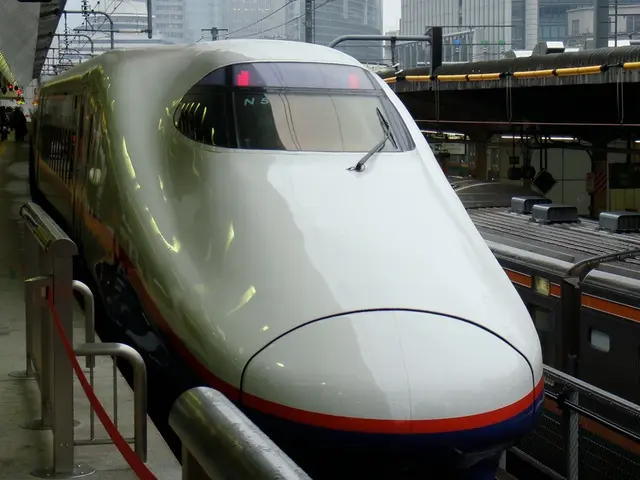Steering Clear of Common Blunders in Retrofitting: A Guide
In the quest for a greener and more sustainable future, retrofitting properties for energy efficiency has become a pressing concern. To ensure success, it's essential to learn from the experiences of experts and avoid common pitfalls.
Consult with professionals, including architects, builders, and advocacy agencies, to gain a comprehensive understanding of the changes needed for your property. Aneaka Kellay from Carbon Co-op offers valuable advice on retrofitting, highlighting common mistakes that homeowners should watch out for.
One of the most significant errors is neglecting a thorough initial assessment of the home's current energy performance. This includes inspecting insulation quality and identifying air leakage points such as walls, attic, roof, windows, doors, air ducts, and chimneys. Without this, upgrades may not target the most critical heat loss areas, leading to suboptimal results and wasted investment.
Another common mistake is installing retrofit windows without considering the original frame and overall window thermal performance. Retrofit windows can improve efficiency but are limited by the existing window design and frame quality, so they may not deliver the expected savings if the frames are poor.
Inadequate planning and failure to research proper materials and technologies may also lead to choosing low-quality or incompatible solutions. For example, selecting HVAC systems that are not compatible with the older home’s ductwork and infrastructure can cause poor system performance and higher energy costs.
Focusing solely on upfront costs and ignoring long-term impacts such as maintenance expenses, energy savings, and user comfort is another short-sighted approach that can increase the total cost of ownership. Ignoring user experience and comfort needs can also lead to an ineffective and unaccepted solution.
To avoid these mistakes, conduct a comprehensive energy assessment to identify key areas for insulation and air sealing improvements. Choose retrofit products like windows and HVAC units that are compatible with existing structures and consider whether extensive upgrades to infrastructure are needed before installation. Perform detailed planning with stakeholder input and research alternatives to balance cost, quality, and long-term efficiency. Prioritize high-quality materials and systems, even if initial costs are higher, due to better durability and operational savings.
Incorporate user comfort and preferences to ensure the retrofit is accepted and effective in everyday use. By combining thorough assessment, planning, compatible technology selection, and a systems-level view, these common retrofit mistakes can be minimized, leading to more energy-efficient, comfortable, and economically viable homes.
Improving heat retention and airtightness without understanding moisture management can result in damp and mould. A fabric-first approach should be prioritized, maximizing the efficiency of the building itself. Review policy to improve building standards to be strengthened around fabric-based energy efficiency improvements.
Insulation should be done first, as it became part of the UK's PAS 2035 framework in 2019. Educate stakeholders, including landlords, about the benefits of retrofitting and the quality of living, not just saving money. A vulnerable stratum of the population, including low-income earners, has little choice, power, or voice and is often bounced between poorly equipped accommodation, facing ill physical and mental health due to poor housing conditions.
Effective communication is needed to establish and meet the needs of the most vulnerable and marginalized in society, and to prevent gentrification and exploitation by slum landlords. The message is to engage landlords and point out what they have to gain, such as a happy, respectful tenant and a jump in the value of the property (up to £24,766 in the UK).
Many private landlords in the rented housing domain are not retrofitting their inefficient properties because they think they won't directly reap the benefits. It is no longer permissible for landlords in the UK to take on new tenants unless they provide efficiency standards of an E-rating or higher. Bristol's Centre for Sustainable Energy found that a combination of enforcement and support to understand what's required of landlords also works.
Public meetings are not always effective in engaging the community, and loud voices may dominate. Talk to someone who has lived through a retrofit to gain insights into common questions and answers. It's important to ask questions about the timeline, cost implications, and disruption caused by retrofitting.
A lack of coordination in retrofitting can lead to poor performance or contradictory measures. Actions should be taken early, well in advance of any retrofit commencing. A retrofitted space should be made available for people to visit and ask questions. A regulatory body that inspects the work, makes tougher enforcement, and penalizes landlords that do not comply would help bridge the energy gap.
Carbon Co-op's Retrofit for All toolkit suggests holding a variety of events, providing different communication methods, and allowing for resident participation in the design process. National or regional authorities can take the helm with retraining programs and twinning retrofits with decarbonizing energy distribution.
By understanding the common pitfalls and adopting a comprehensive, well-planned approach, homeowners and landlords can achieve energy-efficient, comfortable, and economically viable properties.
In the realm of retrofitting properties for energy efficiency, understanding the crucial role of personal-finance considerations is vital. Acknowledging the importance of long-term impacts like maintenance expenses, energy savings, and user comfort, in addition to the upfront costs, can prevent unwarranted escalation of the total cost of ownership. (personal-finance, long-term impacts)
To maximize a building's energy efficiency, it's essential to prioritize a fabric-first approach that focuses on improving the efficiency of the building itself, rather than solely enhancing insulation and airtightness without a proper understanding of moisture management. (fabric-first, energy efficiency)




